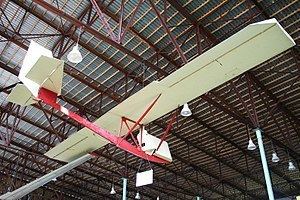Top speed 70 km/h Length 5.6 m | Wingspan 11 m | |
 | ||
Designer Oleg Konstantinovich Antonov | ||
The Antonov A-1 and related designs were a family of single-seat training gliders produced in the Soviet Union in the 1930s and 1940s. All were derived from the Standard-2 (Стандарт-2) (designed and flown by Oleg Konstantinovich Antonov in 1930), which in turn were derived from the Standard-1. They were produced in large numbers, with around 5,400 built of the U-s3, U-s4 and P-s2 major versions alone. The same design formed the basis for the Antonov A-2 and its related group of two-seat designs. Altogether, including the two-seaters, production exceeded 7,600 by 1937.
Contents
While members of the family varied in detail, they shared the same basic design, and parts were interchangeable between them. The design featured a typical primary glider layout with a conventional empennage carried at the end of a long boom in place of a conventional fuselage. The boom could be folded sideways for storage. The monoplane wing was carried high on a pylon above this "keel" and was further braced to it with two struts either side. The pilot sat in front of the wing, and was enclosed in a simple U-shaped wooden fairing that was removed by sliding it forward to allow him or her to enter and leave the craft. The undercarriage consisted of a single skid underneath the "keel", but this could also be fitted with small wooden wheels.
While the original primary training versions (designated У – "U") featured wings of constant chord, subsequent variants designed for soaring flight (designated П – "P") had longer-span wings with tapering outer panels and a streamlined nose fairing. The ultimate development in the line were gliders intended for towed flight (designated Б – "B"), which shared the longer wings and streamlined fairing of the P-types, but added a canopy to enclose the cockpit.
Unlicensed copies were produced in Turkey following World War II by THK and Makina ve Kimya Endüstrisi Kurumu - MKEK, as the THK-7 (P-s2), THK-4 (U-s4) and MKEK 6.
Variants
In each case, the "s" stands for serii (серии – "series")
Specifications (A-1)
Data from Krasil'shchikov 1991, 230
General characteristics
Performance
